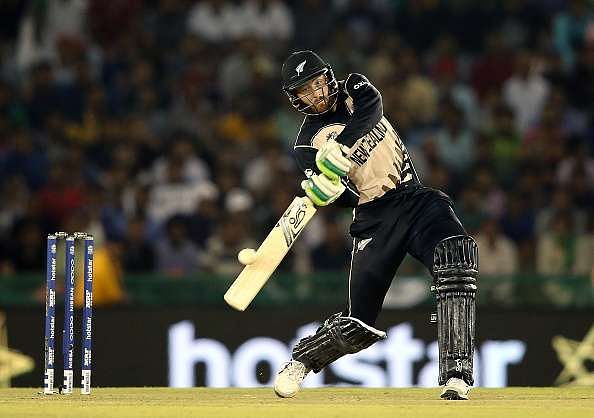
New Zealand's stability in the post-McCullum age speaks about character and maturity

When New Zealand entered the T20 World Cup, not many gave them a chance; in fact, they were far from being the tournament favorites. The Kiwis had done almost everything right in the last few months since reaching the finals of the 2015World Cup , and had checked all the boxes save one – a replacement for Brendon McCullum.
The McCullum effect
Indeed, the former Kiwi skipper’s departure has left a gaping void in the New Zealand team sheet – such had been his dominance, that his mere presence made the line up look formidable. A captain extraordinaire, McCullum was the kind of leader who walked his talk, set examples and instilled belief in his men. Richard Hadlee wasn’t far from the truth when he rated McCullum as the ‘best thing to have happened to New Zealand’.
The opener was undoubtedly the best T20 player New Zealand has ever produced. With tons of experience in subcontinent conditions, courtesy his IPL prowess, he was supposed to be the messiah who could end the Kiwis’ quest for the ever-eluding trophy.
McCullum’s loss had made the New Zealand squad ostensibly weaker; on paper, they appeared barely threatening. A few like Ross Taylor, Trent Boult, Mitchell McClenaghan and Kane Williamson have featured in the IPL, but their total number of matches was still less than what McCullum has played since the inaugural edition in 2008.
The loss of McCullum the skipper was one thing, that of McCullum the batsman quite another. New Zealand had some interesting hard-hitters warming the benches, but none could claim to be the phenomenon that McCullum was. The future, therefore, looked grim for the Kiwis.

Mike Hesson’s men defying expectations
Fast forward eight T20 internationals, New Zealand had won six of them. Although the destructive opener officially retired in February, he hadn’t been around the T20 team since last June. Kane Williamson led in his absence, producing results that were surprising, if not entirely unanticipated for those who had expected the Kiwis to struggle to cope in the post-McCullum era.
Since McCullum’s last T20I on June 23 last year, New Zealand have featured in as many as 11 matches including the 3 in the ongoing T20 World Cup. Martin Guptill has been exceptionally prolific during this period, scoring 512 runs– more than double that of third-placed Colin Munro – at a strike-rate of 164.50. His opening partnership with Williamson has augured well for the Kiwis, the latter accumulating 396 runs at an average of 44.00 in his 11 innings.
The middle-order has not been solid per se, but with someone or the other delivering when it was required of him, New Zealand have managed better than anyone had thought they would. Take Grant Elliott for instance. Averaging 14.57 with the bat, he turned out to be the star bowler with figures of 4/22 against Sri Lanka in the second T20 in Auckland.
Interestingly, it was the same match that witnessed the genesis of Munro as a force to reckon with when he powered his way to a 14-ball 50, overcoming the record set by Guptill five overs earlier. Adam Milne too has built his reputation since, as has New Zealand under the new skipper Williamson.
Williamson has contributed to the triumphs in more ways than one
Eyebrows had been raised when the introvert Williamson became the heir apparent to the outgoing McCullum, but if results are to go by, the 25-year-old has proved to be much more than the batting sensation he is. The revolution that was inspired under the eyes of McCullum has not fleeted away one bit, and the credit goes to Williamson for making the team believe in themselves against all odds.
Kane is no Brendon, and he is mature enough to understand that. He has his own brand of captaincy – nor is he shy to take inputs from seniors like Ross Taylor, neither is he afraid to abide by his instincts and play three spinners against India even if that implied benching their specialist speedsters.
Backed by the captain, the bowling department has justified the faith with Adam Milne, Mitchell Santner, and Ish Sodhi performing exceptionally in recent matches. The ever-growing crop of all-rounders led by Corey Anderson hasn’t disappointed either. It is as if the whole team has sworn to fill the chasm left by one man’s departure from international cricket.
This team is so similar on the field to the New Zealand under McCullum that the change of guard is almost imperceptible until one takes a look at the team sheet. The fact that the Black Caps have adapted to the transition so rapidly and effectively is unbelievable, especially considering the time it had taken for Australia and India to find their footing back after the seniors had left.
It is too premature to pass a judgment on Williamson’s men, but their consistent run in the last few months might just be worth enough to opine that the future of New Zealand cricket rests on able hands.